Chestnut is a tree of the Beech family. The plant does not tolerate drought, prefers a mild, temperate climate. It is used to decorate parks and squares, and glossy fruits of the tree are suitable for preparing delicious dishes, medicinal tinctures and ointments. In planting, growing and subsequent care of the plant there is nothing complicated.
Material Content:
Chestnut tree (Castanea): description of species and varieties
Chestnut (Castanea) - a tree that is able to decorate any alley in the park or garden. Its crown gives an abundant shadow, and pinkish-white flower candles delight with its beauty.
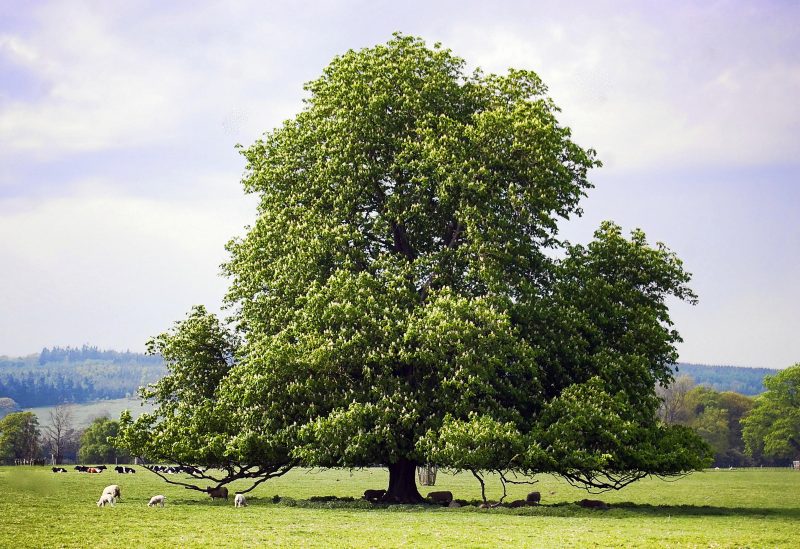
Chestnut blossoms every spring for several weeks. In the fall, fruit capsules are formed, covered with thick spikes. Ripening, they crack, fall and glossy nuts appear from them.
The fruits of the tree have healing properties. Chestnuts are used to treat thrombosis, anemia, arthritis, diseases of the cardiovascular system and bleeding. Often fruits are used in cooking.
- Chestnut is a perennial plant.
- The tree reaches a height of up to 30 meters.
- Its leaves are quite large, fleshy, with well-defined veins.
- Inflorescences are in the form of a brush or candle, which is directed upwards.
- The flowers are white, pink, yellow (depending on the type of tree), with a pleasant aroma.
The most common species is horse chestnut (Aesculus), or the “stomach”. Its peculiarity is in fruits whose taste is astringent and astringent. Often, such chestnuts go to feed livestock.
In addition, there are other types of wood:
- Californian. Its maximum height is 10 m. It grows in the USA (western part).
- The meat is red. The tree grows up to 30 m in height. It tolerates drought poorly, but it has taken root well in the Crimea. The plant has bright red inflorescences.
- Yellow. It tolerates cold and drought.Inflorescences are yellow in color with a characteristic aroma.
- Small-flowered. The trees are small, reach a height of 4 - 5 m.
- Pavia. The chestnut has smooth fruits; fruit boxes have no thorns.
- Japanese. A tree with large, fleshy leaves and white flowers.
These are the most common types of chestnuts, which are absolutely unpretentious in care.
How to grow a chestnut tree from a chestnut fruit
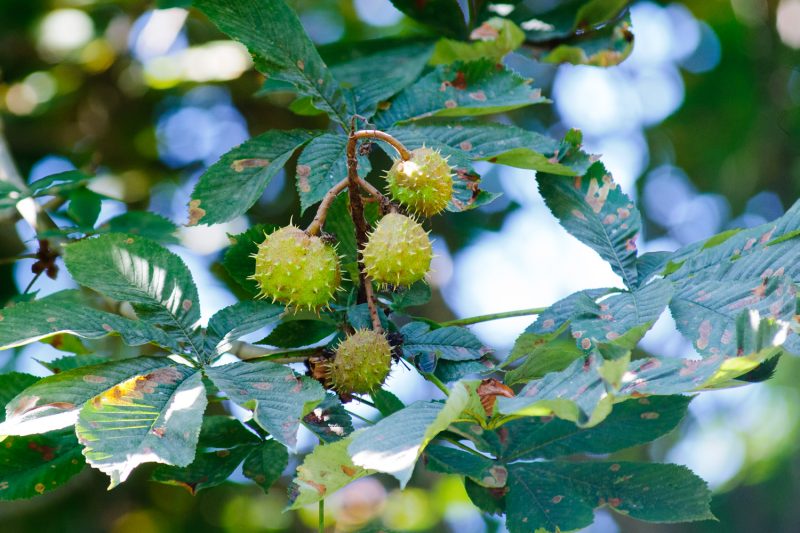
Growing chestnut from a nut is fairly easy.
- Fully ripened and fallen fruits are harvested in the fall, placed in a wooden box and covered with clean sand. It is important that there are no pests and bacteria in it, otherwise the seedling will not take root.
- The box is cleaned in a cold place. The temperature should not exceed +6 degrees. Ideal storage areas - cellar or refrigerator. The chestnut fruit is left in the sand for 2 weeks.
- Having chosen a day for planting, prepare holes up to 6 cm deep. Fertilize the soil and plant the fruit. It is important to remember that the tree grows, so you need to observe the distance to other plants (12 - 15 cm between the planted fruits).
- Wells are covered with soil, without tamping the soil, watered and covered with dry grass or leaves. Thus, an additional thermal “cushion” is created on the surface of the soil, which will protect the fetus from frost in winter.
Planting a chestnut is better in autumn or early spring. In this case, the probability that he will take root is quite high.
Outdoor landing
Ready-made seedlings of chestnut can be planted in open ground. Deciduous tree should be three years old or even older. Experts note that these instances are ideal for planting.
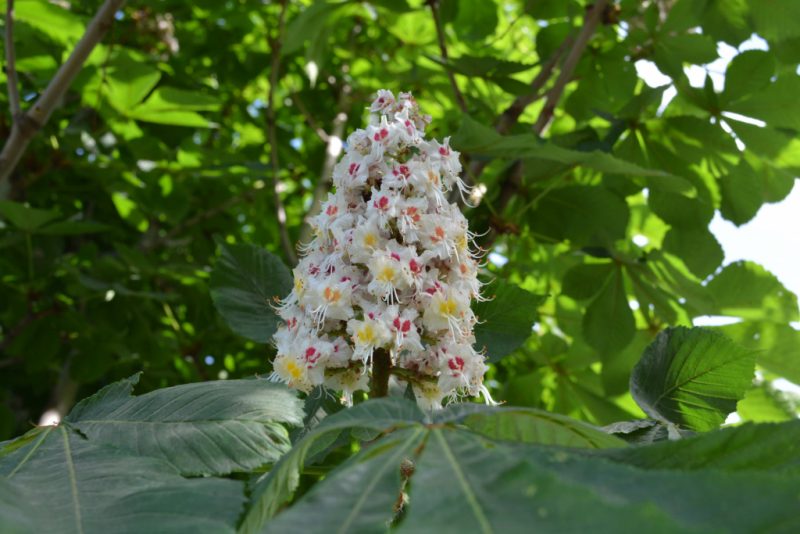
The algorithm of actions is as follows:
- Dig a hole (depth and width not less than half a meter).
- Add humus to the soil. If the soil has an acidic environment, add dolomite flour.
- Chestnut loves moisture, but its overabundance is disastrous for him, so you need to take care of drainage. Place sand and small gravel on the bottom of the pit (layer up to 15 cm).
- The root neck of the tree when planting should be at ground level.
- The seedling is placed in a hole and sprinkled with a soil mixture, building a small mound around the column.
- After this, the tree needs to be watered with warm water (3 - 4 buckets) and then, during the first month, it is advisable to water the seedling daily.
If the tree trunk is thin, it is better to put a support. It is removed when the chestnut is well rooted.
How to care for a chestnut
Caring for a chestnut is quite straightforward. Tune in to the fact that you will have to pay special attention only to a young plant. A mature tree is practically maintenance free.
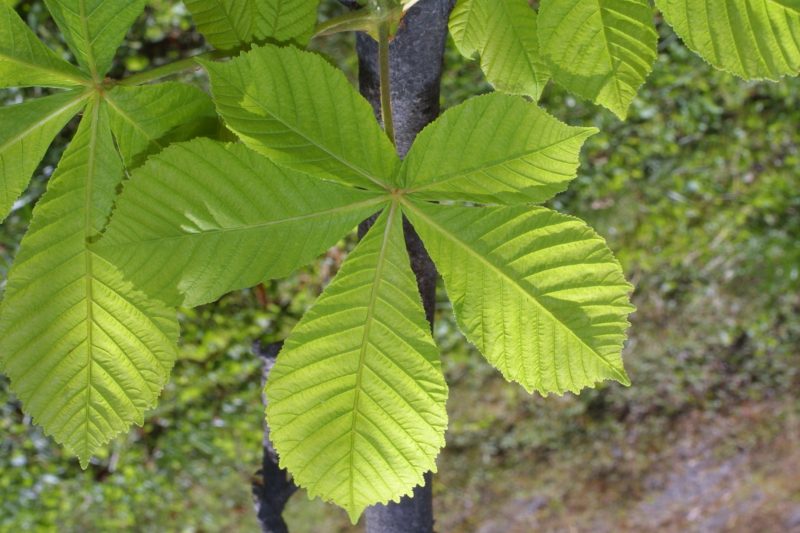
When caring for a seedling, it is important to follow several rules:
- Provide daily watering. It is better to use settled water and irrigate 2 times a day (in the early morning and evening).
- Do not leave the tree in direct sunlight. Otherwise, the chestnut will get serious burns and begin to hurt.
- Do not forget about mulching the soil.
Also, after planting, the following activities are carried out:
- Weeding. Will have to do only at first. When the crown of the tree grows, weeds will not grow under the chestnut.
- Mulching. Make the procedure better with peat, compost and wood chips.
- Top dressing. It is better to fertilize the soil in spring (manure, urea) and in autumn (peat). In the first few years, you need to take care of the plant trunk. In winter, it is wrapped with a layer of burlap, thereby preventing cracking of the bark.
- Pruning. It needs to be done only by a young plant. This stimulates the growth of the crown. Trimming is better in spring. Strong shoots do not touch, cutting only frail branches.
As soon as the tree hardens and grows, care for it will be practically unnecessary.
Pest and Disease Control
Chestnut is sick quite rarely. But if one tree was attacked by pests, nearby plants will also be affected.
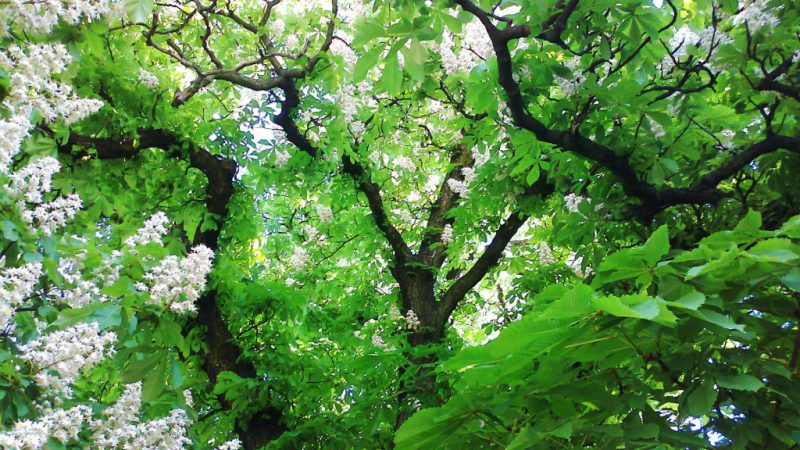
The following pests should be feared:
- Balkan Moth. From it, at the very height of summer, the leaves turn yellow, begin to dry and eventually fall off.But they bloom again in late autumn, then a period of flowering and fruit formation occurs. As a result, in the winter season, the tree enters weakened, unprepared and in the winter can freeze and even die.
- Mite. Leaves begin to turn yellow, fall off. A spider web appears on the trunk, small growths. Fighting these pests is quite difficult. It is necessary not to forget about preventive measures, in spring and summer, treat the tree with Fitoverm or Karbofos.
Experts advise to immediately treat a tree with a Bordeaux mixture when it finds dried, damaged leaves. She is a real chestnut lifesaver.
Growing problems
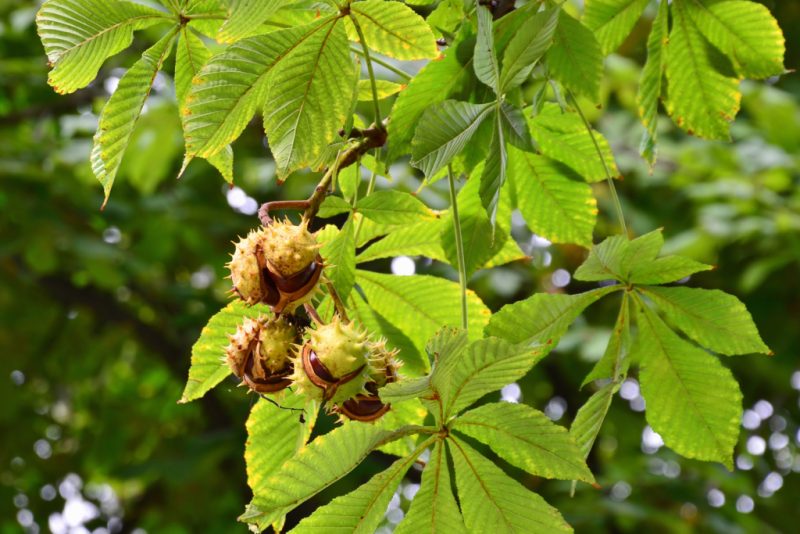
What problems can you encounter when growing chestnuts:
- The appearance of spots on the leaves. This phenomenon is noted as a result of insufficient watering.
- The appearance of powdery mildew on the bark of a chestnut. Means that the plant lacks minerals (phosphorus, potassium).
- Rot on the bark. When it occurs, the tree is completely cut and burned.
It is interesting:vinegar tree
Chestnut is a perennial tree with a beautiful, spreading crown. It can become a decoration of any park alley. Caring for a plant is quite simple, you need to remember about timely watering, fertilizing and mulching the soil.












